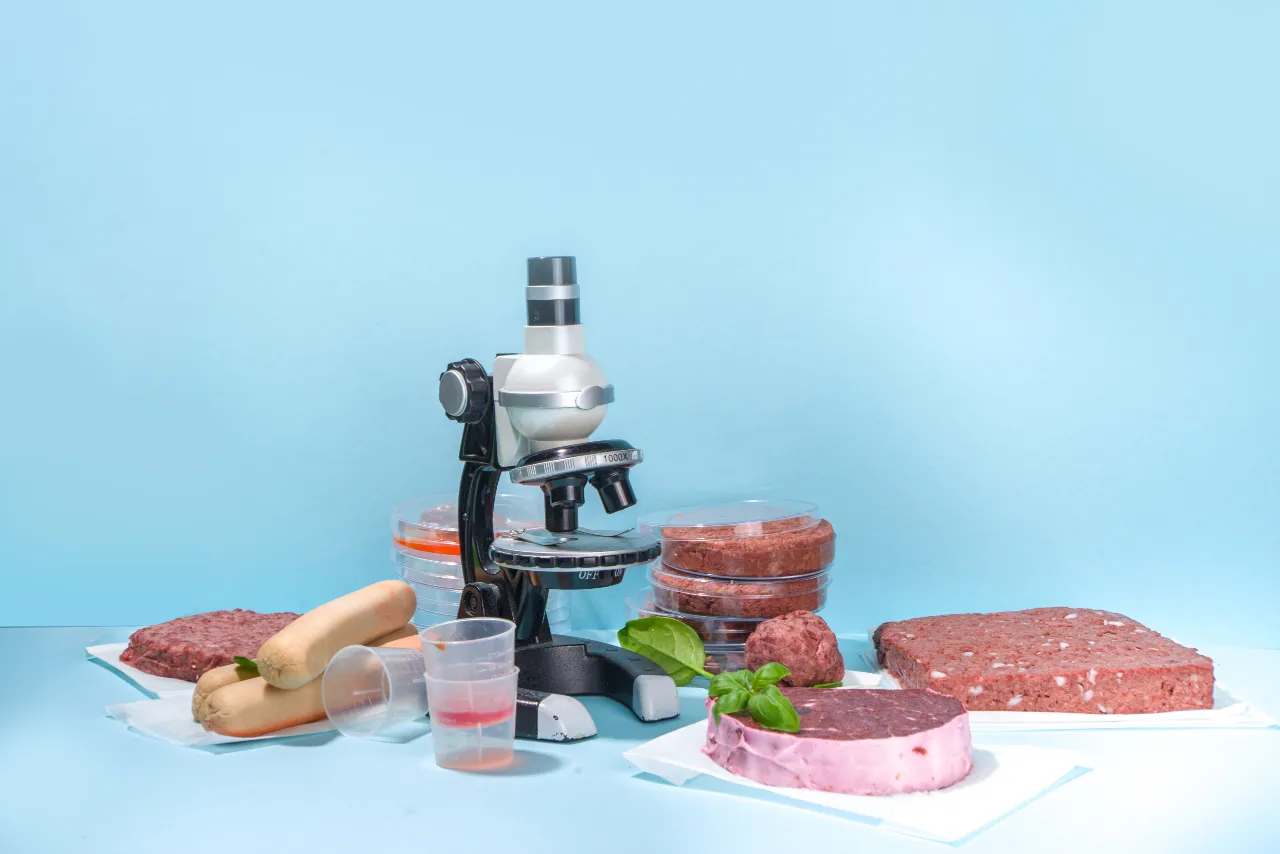
Meat has always had a place at the table. Americans eat nearly 300 pounds of red meat and poultry per person each year. However, consumption has declined slightly over the past two decades, largely driven by changing attitudes toward health and sustainability.
As consumer values and tastes change, and the global economy faces the realities of climate change and a rising population, meat production will need to change. But how close is lab-grown meat to hitting shelves at the local grocery store?
Thanks to substantial investment and strong consumer sentiment, lab-grown meat and other alternatives may be closer than you think.
What Is Lab-Grown Meat?
Known alternatively as cultured meat, slaughter-free meat and cultivated meat, lab-grown meat could provide low-emissions proteins to the US and, importantly, food-insecure nations facing droughts, crop shortages and other issues that limit their domestic supply of meat.
Producing an alternative to meat and poultry products offers a range of environmental and economic advantages, which is one reason the market has received over $2 billion in investments worldwide. The primary driver for cultivated meat is the substantial advantages the process holds over traditional meats in terms of sustainability. Meat accounts for nearly 60% of all greenhouse gases generated in food production, roughly twice as much pollution caused by plant crop production.
How Is Lab-Grown Meat Made?
The lab-grown meat process starts with a small sample of animal stem cells and takes place in a laboratory environment. Producers introduce amino acids and carbohydrates, providing ideal conditions for cells to multiply. These cells grow along the same basic genetic blueprint for animal muscle tissue. When finished, the result looks like ground beef.
At industrial scale, cultivated meat is grown in large stainless steel vats and goes through further processing to more accurately mimic the texture and appearance of traditional cuts of meat.
Read more: Food Regulations in Europe vs. the US
Lab-Grown Meat: Pros and Cons
Cultivated meat has several advantages and disadvantages that impact both the food industry and the broader economy. Like most new technologies, the long-term effects of the process have an element of speculation, but the industry is investing time and resources to make the product a reality soon.
The Benefits of Cultivated Meat
- Meeting increased demand more sustainably – While US meat consumption has experienced a modest decline in recent years, demand remains steady domestically. However, global meat consumption has doubled in the past 20 years, with the forecasted global demand for meat increasing a further 13% by 2030. Most experts predict that alternative proteins, including plant-based proteins and cultivated meats, will help meet global demand by absorbing a portion of the expanding market.
- Land use – Roughly 70% of the world’s arable land is reserved for livestock, which reduces acreage that could be used for plant production. Lab-grown meat’s land use impact is 99% less than industrial-scale livestock farming.
- Water conservation – A single kilogram of lab-grown meat uses between 82 and 96% less water to produce compared to the same amount of beef. It’s not a small amount, either. One kilogram of beef requires an astonishing 15,415 liters of water.
- Accessibility and sustainability – Food production has long since become global, with farmed beef and poultry traveling the globe to serve markets lacking the climate or resources to produce meat competitively. The transportation costs associated with commoditized meat only add to the environmental problems posed by its production. Lab-grown beef could provide regional and local alternatives that are more sustainable and economically viable.
- Animal welfare – Many advocates of meat alternatives are motivated by the inhumane treatment of factory-farmed beef and poultry. Lab-grown meat and plant proteins can potentially lower the demand for factory-farmed meat and the poor treatment of animals associated with it.
The Consequences of Lab-Grown Meat
There is a real-world effect whenever products enter a market, even if the new option offers benefits.
- Employment – If cultivated meat’s market price falls low enough to make it competitive, it could shift employment away from some traditional agricultural/meat-packing.
- Overconsumption – There is a theoretical concern that the availability of fat-free meat could lead to increased consumption in specific populations, accelerating a global obesity trend that’s already considered a crisis in the US.
When Will Lab-Grown Meat Be Available in Stores?
As the US Food and Drug Administration (FDA) approves lab-grown meat products, expect to see several options available. The FDA first announced that lab-grown chicken, produced by a California-based firm, was safe for human consumption. That company, called UPSIDE, said it expects to have products in restaurants in 2023 and on retail shelves by 2028.
It could be years, even decades, before the industry scales enough to grab meaningful market share. Some of the biggest names in the food industry including Tyson Foods and JBS Foods are supporting the effort with venture capital.
Consumers May Not Be Ready
While demand for sustainably produced foods increases, the leap to cultivated meats may be too far for many consumers, at least for now. One study found that 35% of meat-eaters and 55% of vegetarians aren’t interested in trying the product.
There’s time for consumers to adjust and eventually stomach the idea of meat grown in a lab.
Keep an Eye Toward the Future with Tilley Distribution
At Tilley, we’re committed to anticipating changing consumer tastes to better meet the needs of our customers. From developing bespoke ingredients today to crafting creative solutions for the future, we’re investing in your success. Speak with one of our Technical Fellows to learn more about Tilley’s offerings today.
